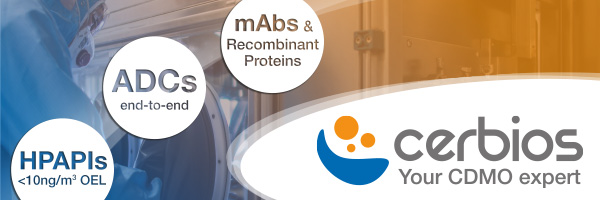Contract Services
API development and commercialization 20th November 2017
By Cambrex
Cambrex discusses the challenges surrounding manufacturing small molecule drugs through their lifecycle. The typical
 Cambrex discusses the challenges surrounding manufacturing small molecule drugs through their lifecycle.
Cambrex discusses the challenges surrounding manufacturing small molecule drugs through their lifecycle.
The typical lifecycle of a small molecule drug can span a period of 20 years first starting as a hypothesis in the laboratory at the lead discovery stage and being registered as a new chemical entity (NCE). The journey from lab to patient then involves several lengthy clinical trial stages, and if successful can then and only then enter the market as a commercial product. Despite this achievement, the molecule’s success is still not guaranteed and the product continues to be shaped by the industry head-winds such as market share, competition and patient access, all of which determine eventual demand. After this zenith, the drug then faces a slow demise from the market, fighting off new products launches with better drug profiles (safety, efficacy) as well as the introduction of inevitable generic competition following the expiry of market exclusivity and patent protection. All of these twists and turns present a set of different requirements for anyone involved in the API material supply for each stage of the lifecycle.
When manufacturing a drug throughout its lifecycle from early clinical phases to late-stage development and commercialization, scaling up the chemical process to support increased API volume demand can present large and sometimes unexpected challenges. The manufacturing process that had been developed to synthesize the molecule in the early clinical phases may prove to be economically unviable or environmentally unsustainable as the project migrates from small scale production in the laboratory and kilo scale to larger scale in pilot and commercial production.
During early clinical stages, the timely production of GMP material is of critical importance, and the innovator company may not have the luxury of time or resources to optimize the synthetic route. The medicinal chemistry route is rarely appropriate for large-scale manufacturing and, as API volumes increase, there may be a need to circumvent challenging chemical steps typically involving hazardous chemistries, chromatography, chiral resolutions, or multiple functional group protection and de-protection steps.
Scale-up and route optimization are key criteria, and a contract manufacturing organization (CMO) may be able to provide expertise that is sometimes unavailable in-house. It can not only complement big pharma’s established process development teams, but can also offer the ability to develop an appropriately scaled-up chemical process for customers who may lack this expertise, in particular, smaller biotech companies with little in-house capability.
A technical evaluation will be necessary to ensure that any new process development will be non-patent infringing, while cost simulations for both the existing manufacturing process and new processes must be carried out to assess the potential benefits of changing the chemistry in terms of cost, speed, yield and purity. Needless to say, the CMO will need to demonstrate a compelling rationale for the customer to consider a change to the chemical process.
Physical characteristics of the end product may also necessitate the need for a new chemical process, for example, if the end product carries a high electrostatic charge which ultimately results in handling difficulties, if particle size or polymorph needs to be controlled in the end product then the choice of the final recrystallization solvent, temperature and mechanical manipulation can be important.
With any process that needs to be scaled-up, the environmental impact must also be taken into consideration. Whilst minimal when the reaction is performed at lab-scale, when the volumes of the reagents increase, the energy costs and waste costs become can become a significant factor in the chemical synthesis. Additionally, with the use of chlorinated solvents becoming increasingly restricted, the careful consideration of alternative solvents is highly desirable.
The success of a partnership between the pharmaceutical company and the CMO will depend on a range of factors. Perhaps the most important of these is the CMO’s ability to offer dedicated support throughout the entire project lifecycle, minimizing the risk of delays to the development process. As well as extensive expertise in process chemistry and engineering, the CMO should have a reputation for quality and reliability in its manufacturing operations and a robust safety record, combined with flexibility, allowing it to adapt quickly and accordingly as the molecule moves through the development pipeline.
Contact:
Cambrex Corporation, One Meadowlands Plaza East Rutherford, NJ 07073, USA
www.cambrex.com



